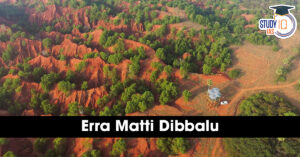Table of Contents
Context
- The Punjab government is promoting the Direct Seeding of Rice (DSR) technique, also known as the ‘tar-wattar’ technique.
- This can reduce water use by 15% to 20% and requires less labour while maturing 7 to 10 days faster.
- Despite these benefits and government incentives of Rs 1,500 per acre, DSR adoption remains limited in Punjab.
DSR Technique: Adoption and Targets
- Current Adoption: In the previous year, only 1.73 lakh acres of the 79 lakh acres of paddy cultivation in Punjab used DSR.
- 2023 Target: The government aims to bring 7 lakh acres under DSR, less than 10% of Punjab’s total rice acreage.

How does DSR Work?
- Traditional Method: Involves preparing nurseries, and transplanting seedlings after 25-35 days, and requires significant labour and water.
- DSR Method: Paddy seeds are directly sown, skipping nursery preparation and transplantation.
- The field is irrigated and laser levelled before seeding using a seed drill or lucky seeder.
- Seeds are treated with fungicide, dried, and sown 20-30 days earlier than traditional transplantation.
- Irrigation Schedule: First irrigation is 21 days after sowing, followed by 14-17 rounds every 7-10 days, depending on soil type and monsoon quality, totaling fewer irrigations than the traditional method.
Types of DSR
- Wet DSR: Sprouted rice seeds are broadcasted or sown in lines on wet/puddled soil.
- Dry DSR: Dry rice seeds are drilled or broadcasted into unpuddled soil with minimal or no tillage.
Soil Texture Importance
- Suitable Soils: Heavy or medium-to-heavy-textured soils are ideal for DSR as they retain water better.
- Unsuitable Soils: Light-textured soils, which do not retain water well, are not suitable and can negate the water-saving benefits of DSR.
- Regional Soil Types:
- Majha (northwestern Punjab) and Doaba (northeastern Punjab) have heavy-textured soils.
- Malwa (central and southern Punjab) has a mix of heavy, medium, and light-textured soils.
Importance of Iron Content
- Iron Deficiency: Soils lacking iron and having weed problems are unsuitable for DSR.
- Ideal Conditions: Soils with plant-available iron are preferred. Ferrace iron (green-coloured, non-oxidized) is recommended over oxidised iron (brown-coloured).
- Impact of Iron Deficiency: Can severely affect yields, causing financial losses and forcing farmers to revert to transplantation, negating DSR benefits.
Challenges and Path Forward
- Lack of Awareness: Farmers’ lack of understanding and failed attempts on unsuitable soil lead to negative perceptions of DSR.
- Education and Support: Comprehensive training and a helpline for farmers are crucial to build confidence in DSR. Compensation for initial losses should be provided to prevent disincentivization.
- Negative Feedback: Word-of-mouth negative feedback further dissuades potential adopters.


 Places in News for UPSC 2026 for Prelims...
Places in News for UPSC 2026 for Prelims...
 Lake Natron: Location, Features, Wildlif...
Lake Natron: Location, Features, Wildlif...
 Erra Matti Dibbalu Added to UNESCO Tenta...
Erra Matti Dibbalu Added to UNESCO Tenta...




















